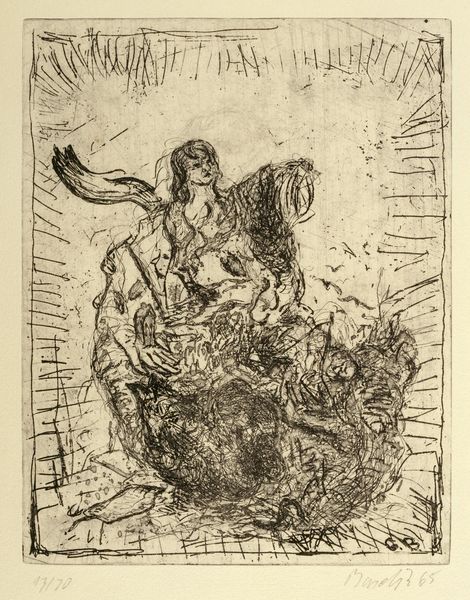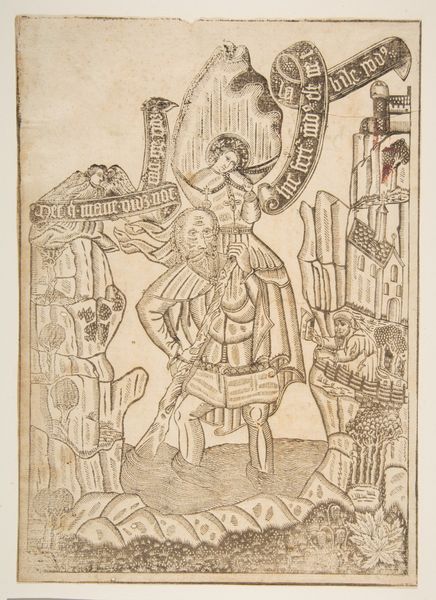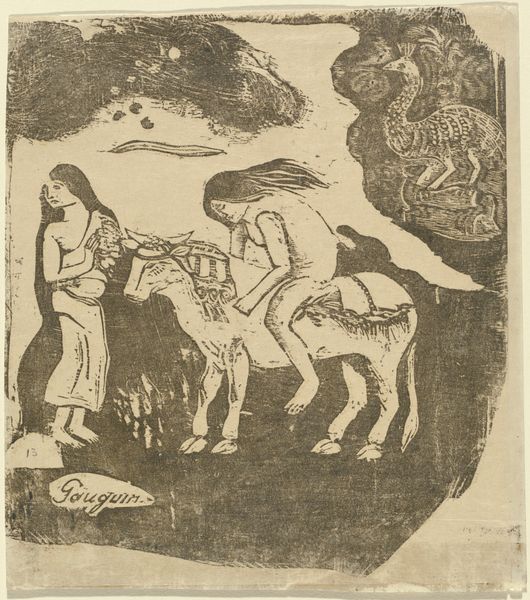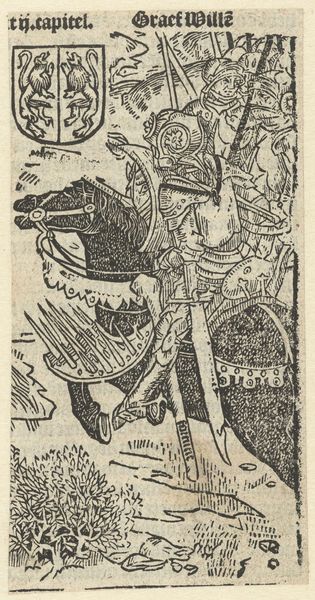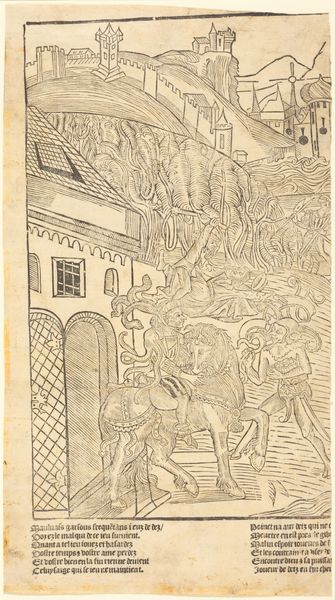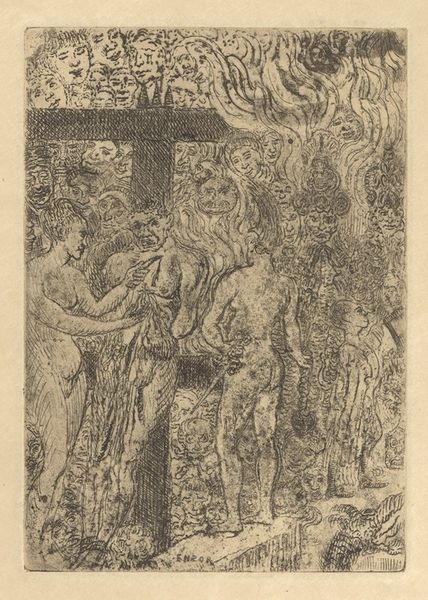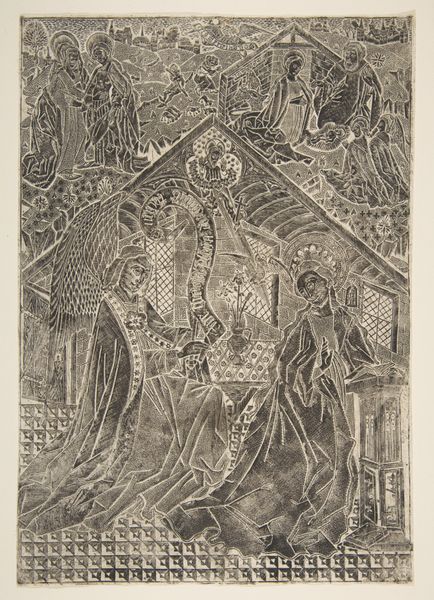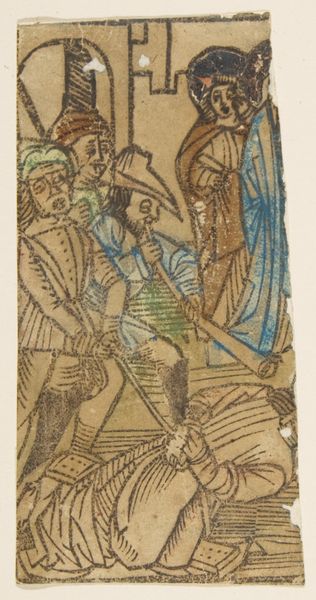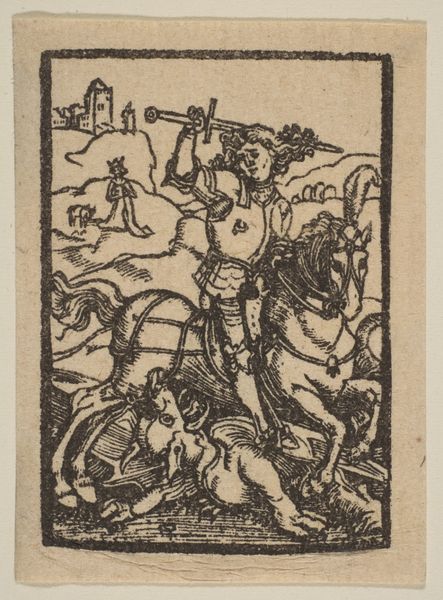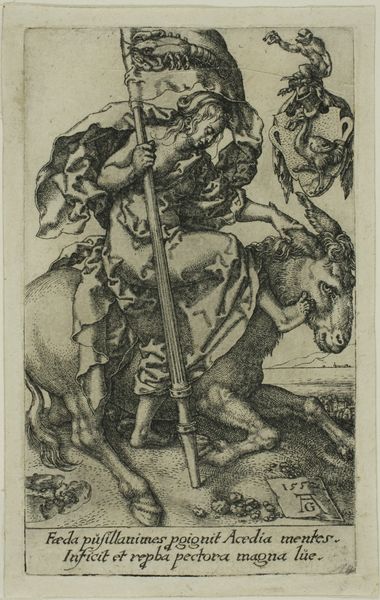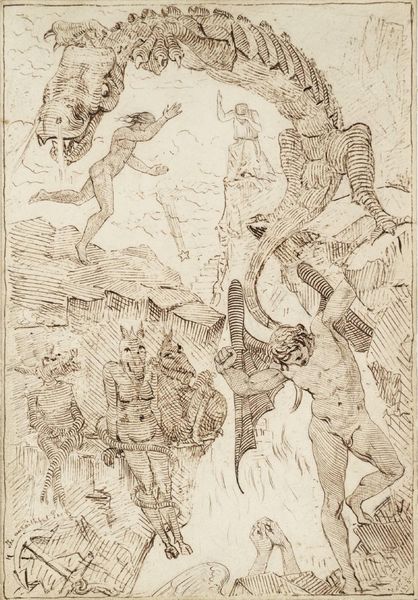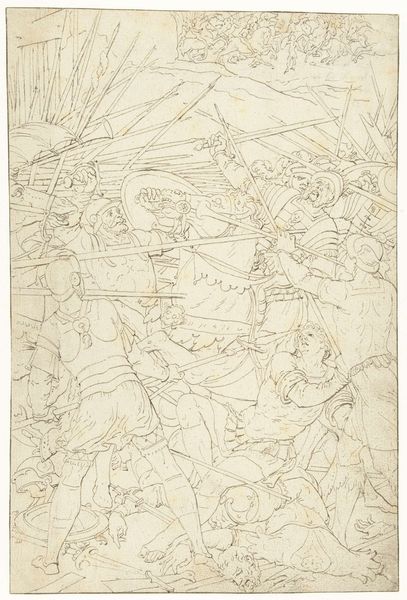
drawing, print, woodcut, pen, engraving
#
portrait
#
drawing
#
medieval
#
narrative-art
#
pen drawing
# print
#
pen illustration
#
pen sketch
#
old engraving style
#
landscape
#
pen-ink sketch
#
woodcut
#
pen work
#
sketchbook drawing
#
pen
#
history-painting
#
engraving
Dimensions: height 144 mm, width 125 mm
Copyright: Rijks Museum: Open Domain
Curator: What strikes me immediately is the graphic quality of this woodcut, the starkness of the lines. Editor: Yes, "Margaretha van Henegouwen te paard" dates from between 1517 and 1530 and it's made from print, pen, and woodcut. The starkness you observe contributes to its impact, don’t you think? Curator: Absolutely, the line work emphasizes both Margaret of Henegouwen and the knight and their steeds, giving them a powerful sense of forward movement against the receding landscape, while underscoring the formal bearing, appropriate to their status. This image has roots in the visual language of chivalry, yet is abstracted into black and white in a way that heightens that tension. The work appears both practical and symbolic. Editor: Indeed. As a noblewoman and an equestrian figure, Margaretha is portrayed not just as powerful, but powerful within a very patriarchal structure. The iconography here is interesting, we can almost sense the ways that femininity is constructed. The visual vocabulary used to portray authority is striking and the armor and weapon of her guard become visual reminders of masculine power. How is it reinforced by her own controlled composure as a rider? Curator: In that period, the ability to ride astride was very much a visual cue linked to social stature and status, a potent combination and statement when seen in conjunction with heraldry. It's also clear how artists were interested in representing social hierarchies and individual roles with specific iconography during this period. Editor: Yet the use of the woodcut, a more accessible medium for disseminating images, disrupts this notion, democratizing that singular statement of authority. A certain friction arises between who she was as an individual and what role and position she represented within society. Curator: So, the image exists as both the veneration of status and the potential challenge to that social order via accessible visual reproduction. An artistic symbol speaks in multiple, sometimes opposing, registers at once, layering different cultural narratives in an image, as it speaks of the world as it is but equally implies an awareness of change. Editor: Yes, the work reflects tensions related to societal expectations of gender and authority and points to how power is performed, negotiated, and asserted within a changing society. That its purpose was circulation through multiple prints underscores its significance for me. Curator: In revisiting “Margaretha van Henegouwen te paard”, one recognizes how visual shorthand, through line, form and reference, offers avenues to cultural continuities that shift over time.
Comments
No comments
Be the first to comment and join the conversation on the ultimate creative platform.
